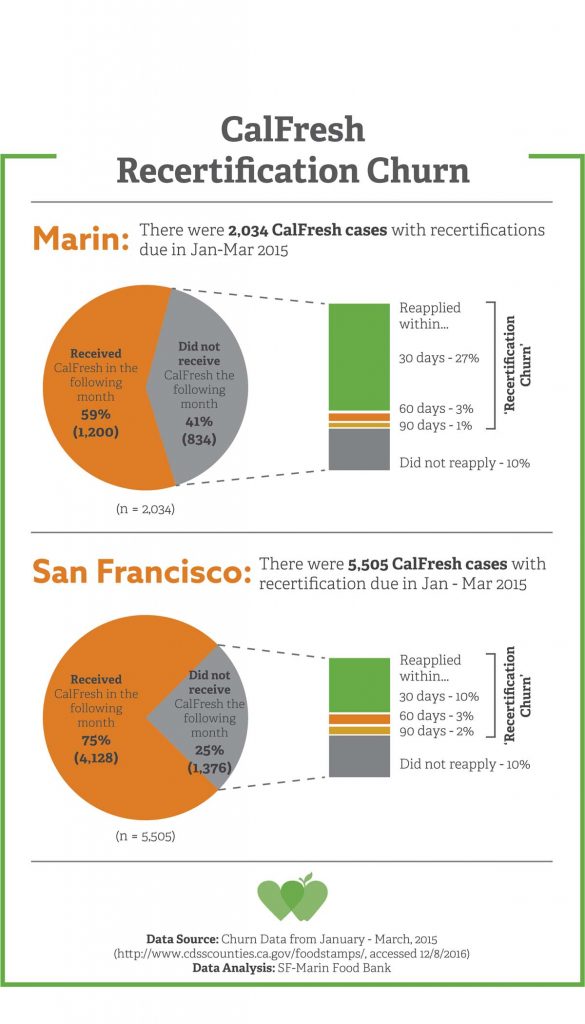Up to $1.16 million lost each year in SF and Marin due to CalFresh ‘recertification churn’
CalFresh recertification churn hurts far too many of our most vulnerable neighbors. Collectively, they are losing out on thousands of dollars of food assistance: we estimate that in San Francisco and Marin, upwards of $96,503 in CalFresh dollars are lost by participants each month due to recertification churn.[1] Recertification churn happens when households do not complete the recertification process (“RRR”) at the one-year mark, only to re-enroll in benefits within 3 months.
In a year, that’s $1.16 million in CalFresh dollars. When we look at the potential impact on our local economy, the number is even greater – $2 million in lost economic activity over the course of a year.[2] This report found that the administrative costs of recertification were anywhere from 1/2 to 1/3 the costs of processing an initial application. If it takes only 5 minutes more to complete the new applications compared to processing the recertification for those that reapply within 30 days, the added workload would be 100 hours per month.

For neighbors who are struggling to make ends meet, staying enrolled in CalFresh can be a big challenge. In San Francisco County, 25% of people with an RRR due fail to complete it and do not receive benefits the next month. In Marin County, that number is much higher, at 41%.
When counting the losses as missed meals, the numbers are even more alarming. Taking only those cases that reapplied within 30 days and calculating the loss of CalFresh benefits for them at the average benefit rate, San Francisco and Marin are missing out on about 32,000 meals per month. Over a year, that’s almost 400,000 meals.[3]
Two counties that appear to be doing a good job of keeping people continuously enrolled on CalFresh through their RRR process are Tulare and Fresno. In both counties, about 85% of households that have an RRR due are still receiving benefits the following month, compared to 59% and 75% in Marin and San Francisco respectively.
Next week, we will explore why churn is so common and what aspects of the recertification process make it so easy to fall off.
In case you missed it, learn the basics about CalFresh Churn in last week’s blog post.
[1] These estimates assume that each household that did not receive benefits in the month following their recertification but then reapplied within 30 days lost a month’s worth of CalFresh benefits at the average benefit level for that county. Those that reapplied in 60 or 90 days are not included in this calculation.
[2] California Food Policy Advocates, ‘Lost Dollars, Empty Plates’ (2014)
[3] It is worth noting that benefits lost due to churn following semi-annual reporting are not captured here.


Share